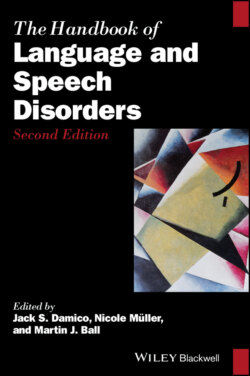Читать книгу The Handbook of Language and Speech Disorders - Группа авторов - Страница 66
4.6 Individual Differences
ОглавлениеWhile still an emerging area of investigation in speech pathology, it would be a disservice to the discussion of intelligibility impairment if we did not touch upon individual differences. Traditional models of intelligibility and learning with normal‐hearing listeners are routinely developed on group averages. Acknowledgment of the variability in individual listener performance has, historically, been minimal. Further, differences have often been treated as a type of error or as justification to remove the data from the analysis. This, and the fact that intelligibility of adults without communication disorders generally hovers around ceiling, has contributed to a false sense of homogeneity among normal‐hearing listeners.
There is mounting evidence that listeners vary widely in their ability to decipher speech across populations and across the age span. Research findings clearly show there is considerable variability in the performance of different listeners who hear the same speaker (Hustad & Cahill, 2003; Hustad, Schueler, Schultz, & DuHadway, 2012; Lam & Tjaden, 2013; Pennington et al., 2013). In fact, studies report standard deviations within a given speaker across listeners of up to 17% for individuals with the most severe dysarthria (Hustad & Cahill, 2003). Other contexts that seem to heighten individual differences in intelligibility performance include the presence of background noise and unfamiliar accent. Findings suggest that some listeners are simply better equipped to tackle the demanding task of understanding speech in challenging conditions. Cognitive, perceptual, and linguistic skills have been shown to contribute to these individual differences. Specific to intelligibility and learning of the impairments associated with dysarthria, factors such as age, rhythm perception abilities, vocabulary knowledge, and working memory likely play a meaningful role in the individual variability observed (Bent, Baese‐Berk, Borrie, & McKee, 2016; Borrie, Lansford, & Barrett, 2017b; Lee, Sung, & Sim, 2014; McAuliffe, Gibson, Kerr, Anderson, & LaShell, 2013). A systematic approach to documenting how these and other listener parameters influence and interact with one another is needed. However, the current data suggest that individual differences should be given due consideration in the measurement and understanding of intelligibility impairment.
